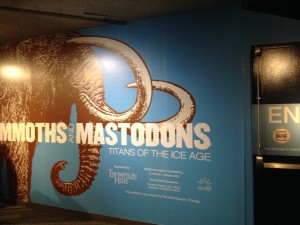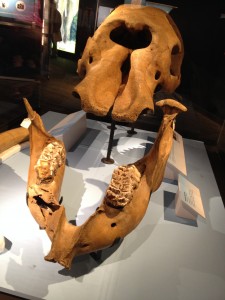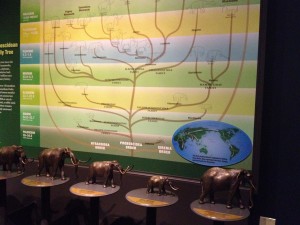Who: Dana C. Crawford, PhD
What: Cleveland Museum of Natural History
Where: 1 Wade Oval Dr, Cleveland, OH 44106
One laid-back Saturday, Steve said, hey, let’s go to the history museum. I said, sure. I would love to go to the natural history museum. Would you believe the two actually exist along with other museums in the University Circle? That afternoon, in fact, we ate lunch at the art museum (posting soon!) before strolling to the natural history museum.
I have always loved going to natural history museums. What kid young or old doesn’t like a good dinosaur or fossil? The Cleveland Museum of Natural History, founded in the 1920s, has an excellent collection of skeletons, specimens, minerals, and educational/fun exhibits covering a wide range of geographic biodiversity (including local biodiversity) and evolutionary history. The Museum even has a cool planetarium to watch movies and gaze at the stars.
On our visit, we caught the Mammoths and Mastodons special limited-time exhibit (Figure 1). I had never put much thought into the difference between the two, but now I know (hint: Mastodons had molars made for browsing; Figure 2)! I also better appreciate the present-day elephant and the fact that they are more closely related to mammoths than mastodons (Figure 3). After viewing the special exhibit, we went into the planetarium to catch a viewing of Life: A Cosmic Story followed by a fun let’s-find-the-constellation session.
There’s a lot to do in this museum, so we become members so we can come back again and again to explore all the permanent exhibits (like the Lucy cast!) as well as the special limited exhibits. Now, I suppose I owe Steve as visit to the history museum…

Figure 1. Mammoths and Mastodons: Titans of the Ice Age at the Cleveland Museum of Natural History through April 26, 2015.


